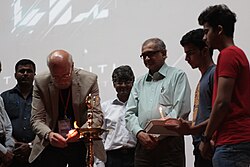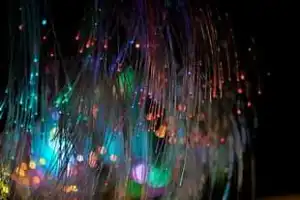Blog Credit: Trupti Thakur
Image Courtesy: Google
Project PARI
India, a vibrant center of artistic expression, has a rich history of public art reflecting its cultural and spiritual diversity. Project PARI (Public Art of India), initiated by the Ministry of Culture and executed by Lalit Kala Akademi and the National Gallery of Modern Art, seeks to blend India’s millennia-old artistic heritage with modern themes and techniques.
Project Details
The first intervention of Project PARI is in Delhi, coinciding with the 46th session of the World Heritage Committee from 21-31 July 2024. Over 150 visual artists are creating wall paintings, murals, sculptures, and installations, inspired by various traditional Indian art forms, such as Phad, Thangka, Miniature, Gond, Tanjore, Kalamkari, Alpona, Cheriyal, Pichhwai, Lanjia Saura, Pattachitra, Bani Thani, Warli, Pithora, Aipan, Kerala Murals, and Alpana.
Themes and Inspirations
The project includes sculptures and artworks inspired by nature, Natyashastra, Gandhi, Indian toys, hospitality, ancient knowledge, Naad (Primeval Sound), Harmony of Life, Kalpataru (the divine tree), and World Heritage Sites like Bimbetka and the seven natural World Heritage Sites in India.
Inclusivity and Engagement
Project PARI aims to democratize art by integrating it into public spaces, transforming urban landscapes into accessible galleries. This inclusive approach fosters a shared cultural identity and enhances social cohesion. Women artists play a significant role in the project, highlighting India’s NARI SHAKTI.
Overview:
Public art spaces of India are a reflection of our Lok Kala and Lok Sanskriti. When we talk about Public Art, it is very dynamic and is an intersection of past, present, and future. Through it, we can see the amalgamation of different ideas in various art forms like traditional and contemporary. This art form which is freely accessible to the public; attracts not only attention but even thoughts begin to gather as to why this work of art is here, what is its uniqueness, what material it is made up of, and what is the thought of the artist behind this artwork. Making it open to various interesting interpretations. These are the few aspects that make this art very special. It connects the public to the art.
With rapid urbanization, Public Art enhances a sense of distinctiveness and adds aesthetic value to the image of a city. It contributes to the visual quality of the public arena encouraging community pride with a sense of belonging. It uplifts and engages visitors or passers-by’s travel experience by leaving an imprint in their minds. The outreach of Public Art is immense and thought-provoking. It acts as a significant factor in giving visual recognition to a specific place. The public art augments and induces meaning to a public space making it an integral part of the culture and society.
The Ministry of Culture, Government of India, on the occasion of the 46th Session of the World Heritage Committee Meeting, which is being held in New Delhi from 21st-31st July 2024, has initiated Project PARI (Public Art of India). Under it, Lalit Kala Akademi, an autonomous institution under the Ministry of Culture, has invited more than 150 visual artists from all over the country. The Project PARI aims to provide a platform to uplift the aesthetic and cultural outlook of Delhi while adding grandeur to the rich historical legacy of our national capital.
Lalit Kala Akademi and the National Gallery of Modern Art seek to bring forth public art that draws inspiration from millennia of artistic heritage (lok kala/lok sanskriti) while incorporating modern themes and techniques. These expressions underscore the intrinsic value that art holds in Indian society, serving as a testament to the nation’s enduring commitment to creativity and artistic expression. These artists are working on various sites in the national capital for the beautification of the public spaces for the upcoming event.
The representation of Art in public spaces is particularly significant as it showcases the nation’s rich and diverse cultural heritage. The democratization of art through public installations transforms urban landscapes into accessible galleries, where art transcends the confines of traditional venues such as museums and galleries. By integrating art into streets, parks, and transit hubs, these initiatives ensure that artistic experiences are available to one and all. This inclusive approach fosters a shared cultural identity and enhances social cohesion, inviting citizens to engage with art in their day-to-day life. Project PARI aims to stimulate dialogue, reflection, and inspiration, contributing to the dynamic cultural fabric of the nation.
Traditional art forms as well as sculptures, murals, and installations have been created under this beautification project. More than 150 visual artists from all over the country have come together to create the various wall paintings, murals, sculptures, and installations being prepared under this project. The creative canvas includes but is not limited to artwork inspired by and /or drawn in styles of Phad paintings (Rajasthan), Thangka painting (Sikkim/Ladakh), miniature painting (Himachal Pradesh), Gond art (Madhya Pradesh), Tanjore paintings (Tamil Nadu), Kalamkari (Andhra Pradesh), Alpona art (West Bengal), Cheriyal painting (Telangana), Pichhwai Painting (Rajasthan), Lanjia Saura (Odisha), Pattachitra (West Bengal), Bani Thani Painting (Rajasthan), Warli (Maharashtra), Pithora Art (Gujarat), Aipan (Uttarakhand), Kerala Murals (Kerala), Alpana art (Tripura) and more.
The proposed sculptures being created for Project PARI include wide-ranging ideas such as paying tributes to nature, ideas inspired by the Natyashastra, Gandhi ji, toys of India, hospitality, ancient knowledge, Naad or Primeval Soun, Harmony of life, Kalpataru – the divine tree, etc.
Furthermore, in sync with the proposed 46th World Heritage Committee Meeting, some of the artworks and sculptures draw inspiration from World Heritage Sites such as Bimbetka and the 7 natural World Heritage Sites in India find a special place in the proposed artworks.
Blog By: Trupti Thakur
09
JulIndia’s PARI
Jul 09, 2024Recent Blog
The TechKritiApr 26, 2025
India’s First Quantum Computing VillageApr 24, 2025
India’s Achievement In QKDApr 22, 2025
The V2G TechnologyApr 21, 2025
Country’s Specific Domain By GoogleApr 19, 2025




